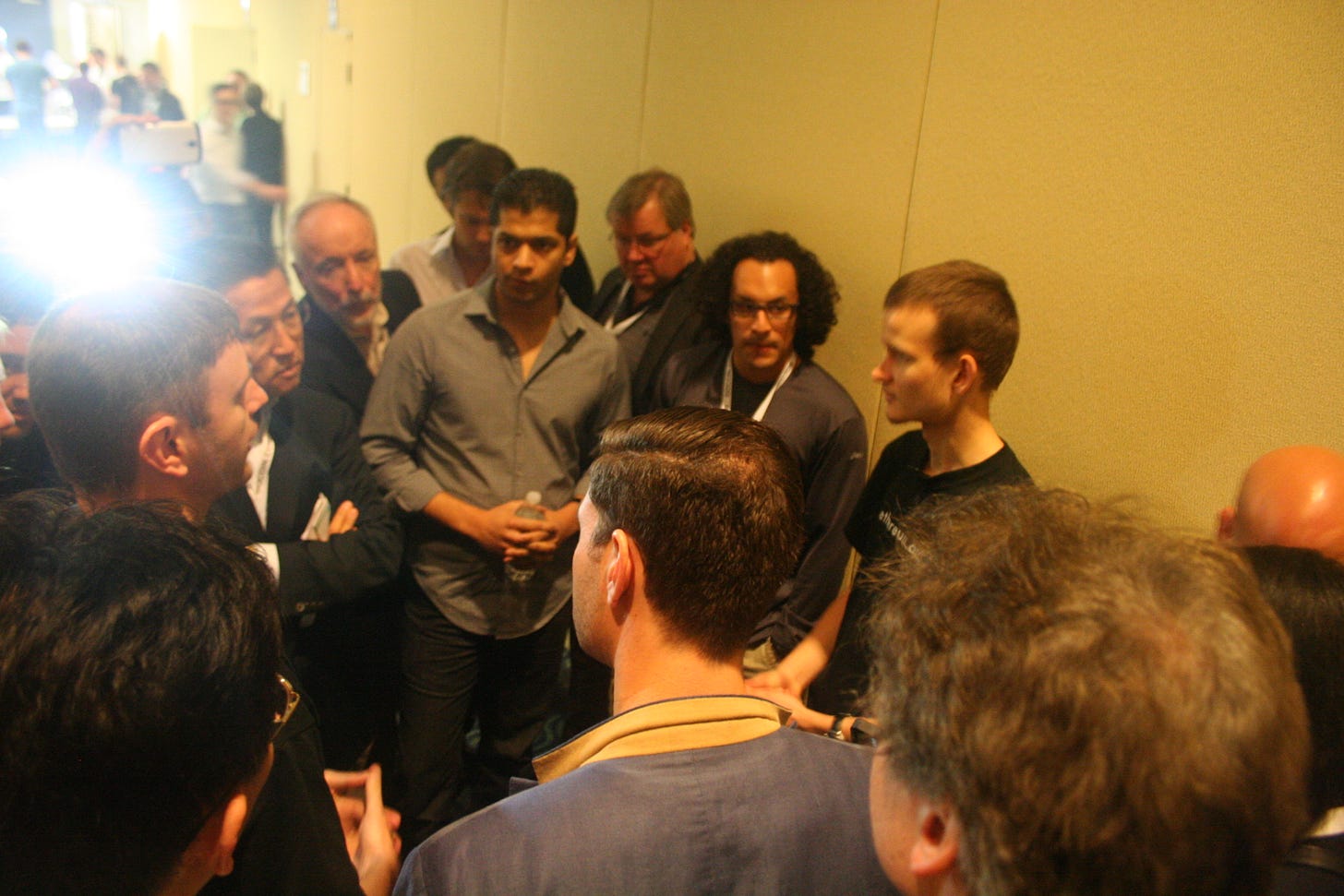👁️ Bullish and EOS: A Very Long Grift
The team behind Bullish brutally rugpulled their earliest investors. They'll do the same to public markets.
Welcome back to Dark Markets, a newsletter about technology fraud. I’m David Z. Morris, a longtime tech and finance reporter. This week we dive into Bullish, the crypto exchange that recently went public at a $10 billion valuation. Much of that value derives from fundraising for EOS, a blockchain project announced nearly a decade ago.
If you want more of my work, consider pre-ordering my book on the FTX fraud and Effective Altruism, or check out Bitcoin is Magic, my case for crypto’s transformative potential.
Read on for the mind-boggling story of how Bullish got away with a $2.4 billion-dollar shell game.
***
The crypto exchange Bullish went public in an IPO earlier this month, and beat expectations to reach a $10 billion valuation. To outside observers, this will seem relatively unremarkable. Coinbase is already a highly-valued public company, and Kraken is also exploring an IPO. But Bullish is nothing like Coinbase or Binance or Kraken. Those exchanges, whatever their many other flaws as companies or services, grew organically with the crypto sector worldwide.
Bullish, instead, is what one analyst recently referred to as a “never-heard-of exchange.” It has no credibility with experienced users. CoinMarketCap ranks it as the 101st crypto exchange in the world by spot volume, though Messari ranks it a much more respectable 17th. Coingecko has it almost precisely in the middle, around 40th in volume.
One possible explanation for these discrepancies is differences in how these data feeds identify or handle wash trading – fake, value-neutral trades that falsely boost volumes. Dave Wang, an analyst who is short Bullish, believes wash trading is rampant on the exchange. Importantly, wash trading isn’t necessarily conducted by the exchanges where it happens, but by traders themselves, for a variety of reasons – but Bullish’ near-zero transaction fees make it the ideal venue for wash traders. Wang’s entire analysis is very worth reading – he calls the company as it exists today “a fraud in plain sight,” and some of his findings are, in a word, insane:
“Accounting abnormalities: The company’s core business metric, "Adjusted Transaction Revenue" (ATR), serves to obscure true revenues by blending in non transaction items like mark to market gains on crypto.
… The headline 2024 "adjusted transaction revenue" is ~$158m whereas core transaction revenue is $2m .... meaning the stock trades at ~5,000x multiple on core business.”
But my topic today is not the accounting practices of Bullish. Instead, it is Bullish’ wild origin story – and the apparent origin of a reported 24,000 BTC worth $2.4 billion on its balance sheet. It appears that started as much, much more money: Bullish was capitalized largely by a company called Block.One, which injected $400 million in cash and 164,000 Bitcoin, even then worth more than $9 billion, to found Bullish in 2021.
Did they sell on the order of $7 billion in BTC to fund operations between 2021 and 2025? That is, so far, unclear to me. But the more important question is where Block.One got all that Bitcoin in the first place.
It all started with a man named Dan Larimer, who is arguably the third-most brilliant blockchain innovator to ever live, and who loves Jesus very much.
This is the first of a planned series of deep dives into crypto history that’s suddenly relevant again. Future pieces in this series will include deep dives into Justin Sun’s Tron; Brock Pierce and Tether; Ripple and XRP; and Charles Hoskinson’s Cardano. To gain full access to this and other future premium content, become a Dark Markets supporter below.

Bullish and CoinDesk
I do need to first talk about what happened to me in 2023, mostly to clarify my personal connection to Bullish: there is none.
They now own CoinDesk, where I used to work. And I had already published critical analysis of the organization years before their takeover. But I was let go from CoinDesk, as far as I know, before Bullish was even in the conversation to take over. The acquisition wasn’t announced until three and a half months after I was laid off. I (like literally everyone else) have been extremely disappointed in their stewardship of CoinDesk, but they’ve never harmed me personally. My evaluation of the organization is based, instead, on general standards of professionalism and ethics.
Keep reading with a 7-day free trial
Subscribe to Dark Markets to keep reading this post and get 7 days of free access to the full post archives.

